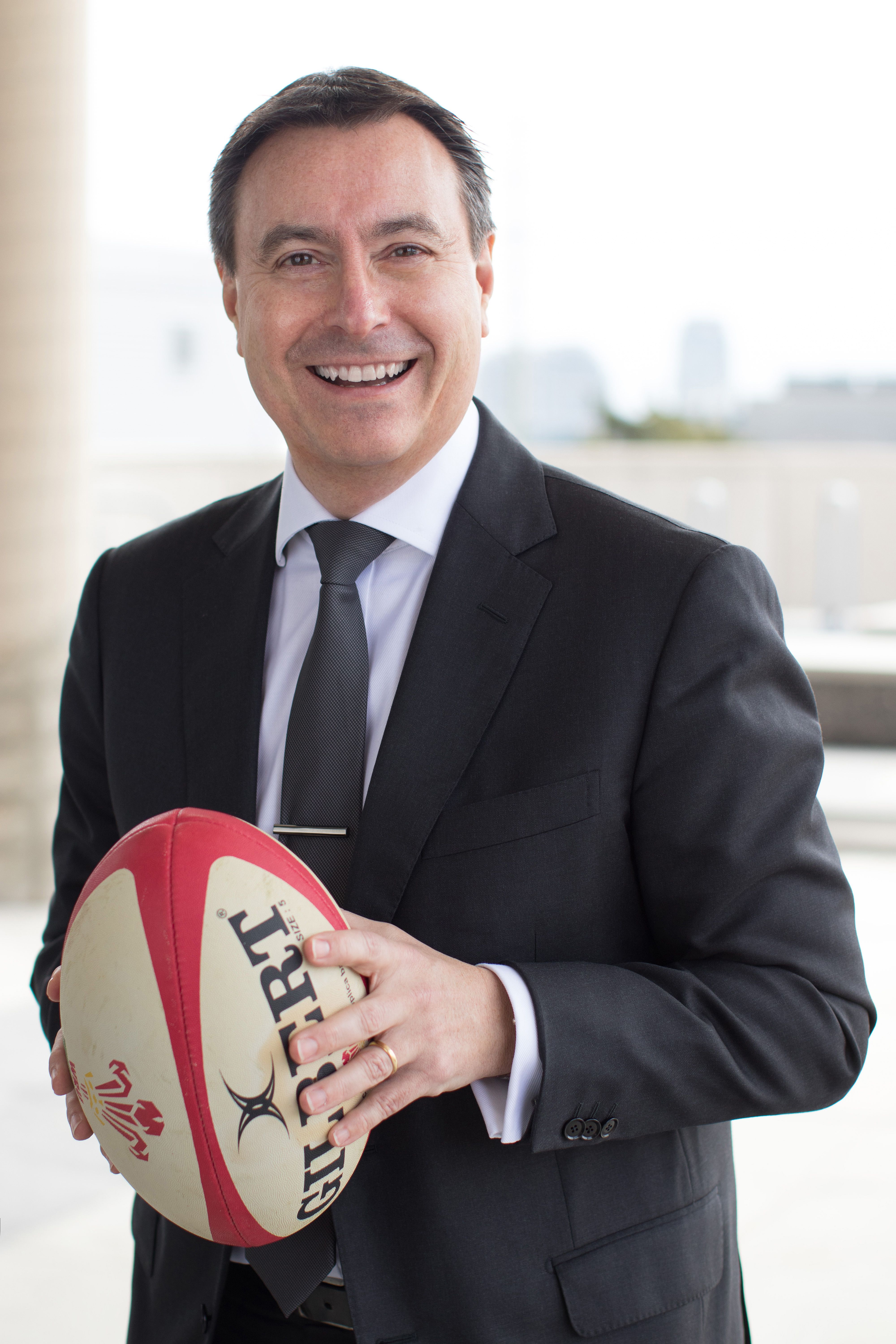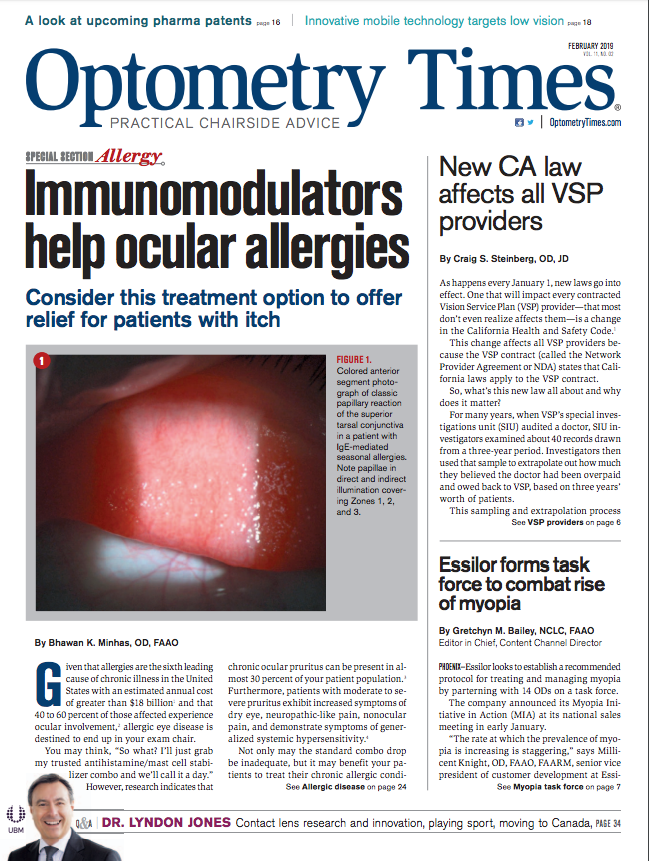Q&A: Contact lens research and innovation, playing sport, moving to Canada from the UK
Lyndon Jones, OD, FAAO, FBCLA

Lyndon Jones, OD, FAAO, FBCLA Director, Centre for Ocular Research & Education (CORE) at the University of Waterloo, Ontario, Canada
Meet Lyndon Jones, OD, FAAO, FBCLA. Director of the Centre for Ocular Research & Education (CORE) at the University of Waterloo, Ontario, Canada.
Where did you grow up?
I was born in a little place in south Wales called Cwmbran that I dare anyone else to be able to spell. I grew up there, went to university about 12 miles away at the University of Cardiff, and moved to London after that. My dad worked in a factory, and Mum worked at home. The area I came from was relatively poor. No one else in my family has been to university, so it was pretty unusual when I went.
How did you get involved in contact lens research?
When I was in school I didn’t know what I was going to do, so I took a year off. I was DJing at night and drove a truck delivering sports goods during the day. I wasn’t going to make enough money being a DJ, so I decided to go to university. I went to Cardiff because it was closest to home and I could continue DJing on the weekends. I chose optometry purely because it had the best intramural rugby team. I knew nothing about optometry whatsoever, and I found that I absolutely loved it.
Optometry in the UK is still a four-year course, but in your fourth year you go into private practice or work at a hospital or teaching institution. I ended up at a teaching institution in London. I happened to be a decent teacher, so the institution offered me a job. We often did clinical trials with contact lens companies, and that’s how I got started.
Related: Q&A: Art gallery and beer in the office, no office phone, and reggae music
How did you come to the University of Waterloo?
I started working in a private practice when I graduated in 1986. By 1990, I was given an opportunity to buy into the two-site practice. My wife Debbie and I bought the practices in 1991 and grew them quite successfully.
By the late ‘90s, I was finishing my PhD, and I had to decide whether I was going to move to academia. So we sent our CVs off around the world, and the first place we got two offers was Canada. We came to Canada in 1998, and we’re still there 20 years later. Our kids are very Canadian. The winters are tough, but it’s safe, friendly, with lots of open space and clean air. The main thing that keeps me here is CORE. With the group that we have doing clinical research plus the biological sciences group, it’s hard to find anything to compete with it.
What got you interested in ocular pharmaceuticals and drug delivery?
About 2001, silicon hydrogels had just come out. I was interested in whether we could use a silicon hydrogel as a bandage lens with the delivery of a drug. Commercially available lenses dump the drug on the eye very quickly as opposed to a slow, sustained release over time. Now we have bio-material opportunities to be able to control the rate of delivery, and that’s what we been involved in for the last 10 years. You can load the drug into the lens and put an outer coating that prevents the delivery.
Related: Silicone hydrogel daily disposable lenses match hydrogel for comfort
Another is to develop a thin film within the lens that slows the release of the drug. A third way is to control it using charges. Some contact lens materials are negatively charged-if you put a positively charged drug into that negatively charged substrate, it slows down the release. You can also encapsulate within the lens the drug into small vesicles and those vesicles have a coating around them that slows the release.
The final way is to take a drug of a particular shape and you create cavities within that lens that are molecularly the same shape as the drug. Once you put the drug into that shape, the lens wants to hold on to it because it’s a perfect match and that slows the delivery to the ocular surface. We can control the release of drug up to four weeks.
Read more about contact lenses
What do you see coming in the next 10 years of contact lens innovation?
In short-term developments, you’ve got photochromic contact lenses and anti-allergy drug-delivering contact lenses. Then we can look at changes in materials. I think we’re going to see other materials where the bulk is delivering oxygen but the surface being modified to enhance wettability and end-of-day comfort. Then we’re looking at bio-sensing lenses that will be able to detect what’s in your tear film. I think that within the next five years we’ll have some product on the market with biomarkers able to detect systemic changes within your body.
In the long term, many companies are trying to incorporate electronics into contact lenses. There’s already a commercially available product that can measure the intraocular pressure by using a little strain gauge, it’s from a Swiss company. The long-term dream is to have these things look up websites and facial recognition. There’s all kinds of long term aims which will be complicated, but enough companies working on them that I think we could see some of these.
What it’s like being married to a fellow OD?
It’s good, actually. We met in my final year of university, and we’ve worked together in practices since the mid ‘80s. We work very differently. Debbie is very calm, cool, and collected, and I’m not. Debbie’s been our head of department for about 18 months. That kind of sucked because I had to report to her at work and at home. [Laughs]
What’s something your colleagues don’t know about you?
I grew up never not playing sport. I injured my neck when I was 25, and that was the end of my rugby career. I picked up soccer when I came to Canada in my mid 30s. I’m pretty competitive about most things but in particular about sport. I think a lot of people know that I sing. We had a band at Waterloo that played at many of the major conferences. We finished five years ago when two of the guys moved away. Often I’d be speaking at a conference during the day, then at the gala dinner we’d rock it with the band. It was like, “He was the guy that I saw lecturing today. What? How’s that?” For sheer shock, that was awesome.
What do you like to binge-watch?
I don’t watch very much TV. There’s so much blooming work to do. My son’s an ice hockey player, so we spend a lot of time watching him play. The only things I ever watch on TV are sports and news.
Related: Q&A: Convergence insufficiency, neuroplasticity, and hanging upside down over a cliff
How should optometry move forward?
There’s increasing pressure on optometry schools to get more disease, diagnosis, and treatment into the curriculum. The problem is that the percentage of patients who actually have disease, is a small proportion of what you end up seeing on day to day. My concern is that as we move away from the bread and butter of optometry-refraction, pediatrics, contact lenses, binocular vision-someone else will come along and take it. I’m very supportive of expanding the scope of optometry; I worry about moving away from the things that many patients need our expertise in.
Do you have any regrets?
I regret not being able to play sport at an international level. I would have loved to have been a professional athlete. My son has just signed an NHL contract-he was drafted as a junior player to the Las Vegas Golden Knights. I live vicariously through my son’s hockey. I think having regrets doesn’t help you very much. I mean, you made those decisions; suck it up, princess, and get on with it.
What keeps you engaged in teaching and research?
At a university, you have to do three things: teach; scholarship, research, or publishing; and administration. I absolutely love teaching-undergraduate students, graduate students, postdocs, or the profession with lecturing. Number two would be research. The thing I enjoy the least is administration. Most of what I do is administration, the next is research, and the thing I do least is teaching. [Laughs]
What’s the craziest thing you’ve ever done?
The practices that Debbie and I had in the UK were very successful, and we got bored. We wanted a new challenge. I remember saying to my dad, “We’re going to sell out of the practice and go work at university.” The way universities work is that you go there for a period of time on probation. So, he said, “You’re giving it all up to be on probation in a university environment, much less money, in another country. You are out of your mind.” It is the most bizarre decision we ever made, but in hindsight it was the best decision we ever made.

Newsletter
Want more insights like this? Subscribe to Optometry Times and get clinical pearls and practice tips delivered straight to your inbox.